This wrought iron keyed deadbolt features a push-button mechanism located at the bottom right, which allows the cover concealing the keyhole to be lifted. The key opens in two stages by inserting it. The key features a molding and pearl decoration, as well as a tribulated ring. The deadbolt features a series of elements on the outer edge, influenced by architecture and arranged in a symmetrical and balanced manner, following classical motifs. The bar consists of a tubular part and a flat part (at some point, another decoration similar to that of the deadbolt appears). Also noteworthy is the heraldic section in the shape of a shield with a closed crown in the area of the lock's shield. Compare this work with, for example, the shields of locks from ancient Spanish chests such as those preserved in the Museo Casa de Cervantes in Alcalá de Henares (Madrid), with locks from churches, convents and other important ancient institutions (the lock of the Escorial in the Museum of the Royal Collections of National Heritage in Madrid, the doors of the Hospital of the Third Order in Madrid, etc.), or pieces such as the 17th-century Sevillian lock from the collection of the Museo Español de Antigüedades, now preserved in the Museo Arqueológico Nacional (inventory 52014).
Weight: 4 kg. - Size: 40.5x6x15.5 cm.



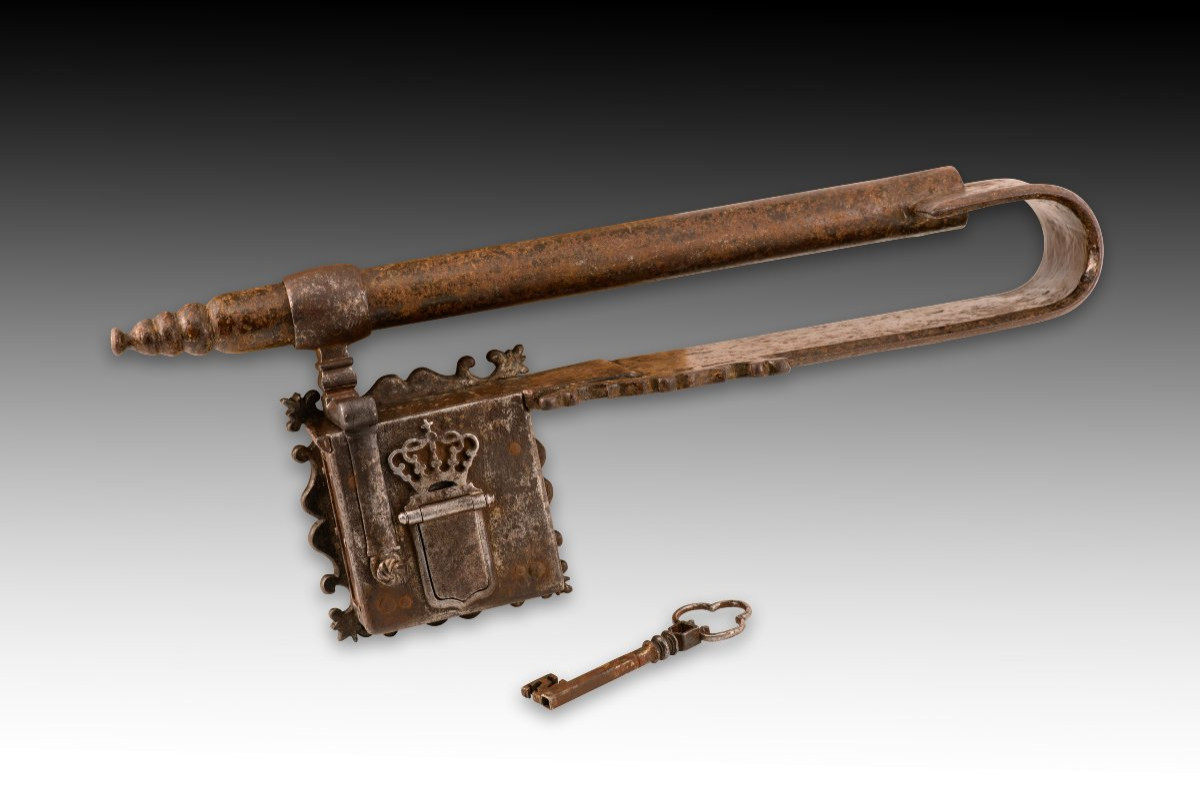



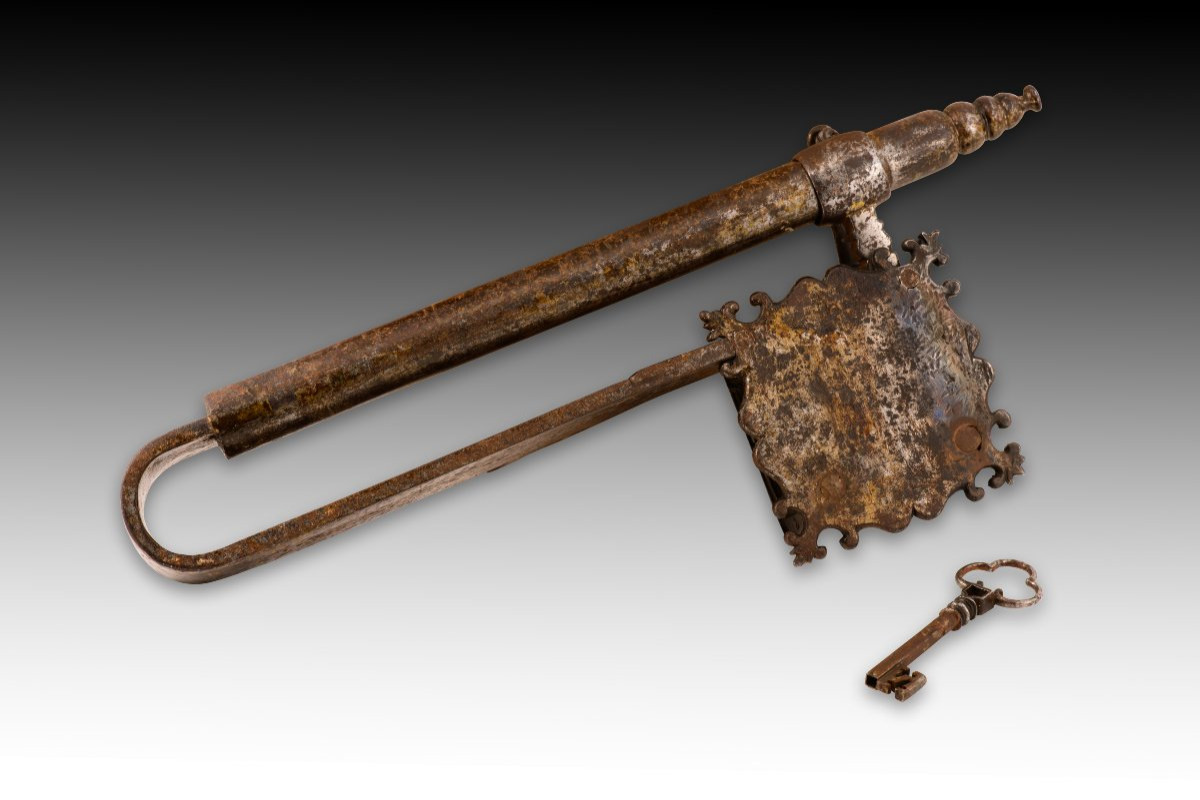



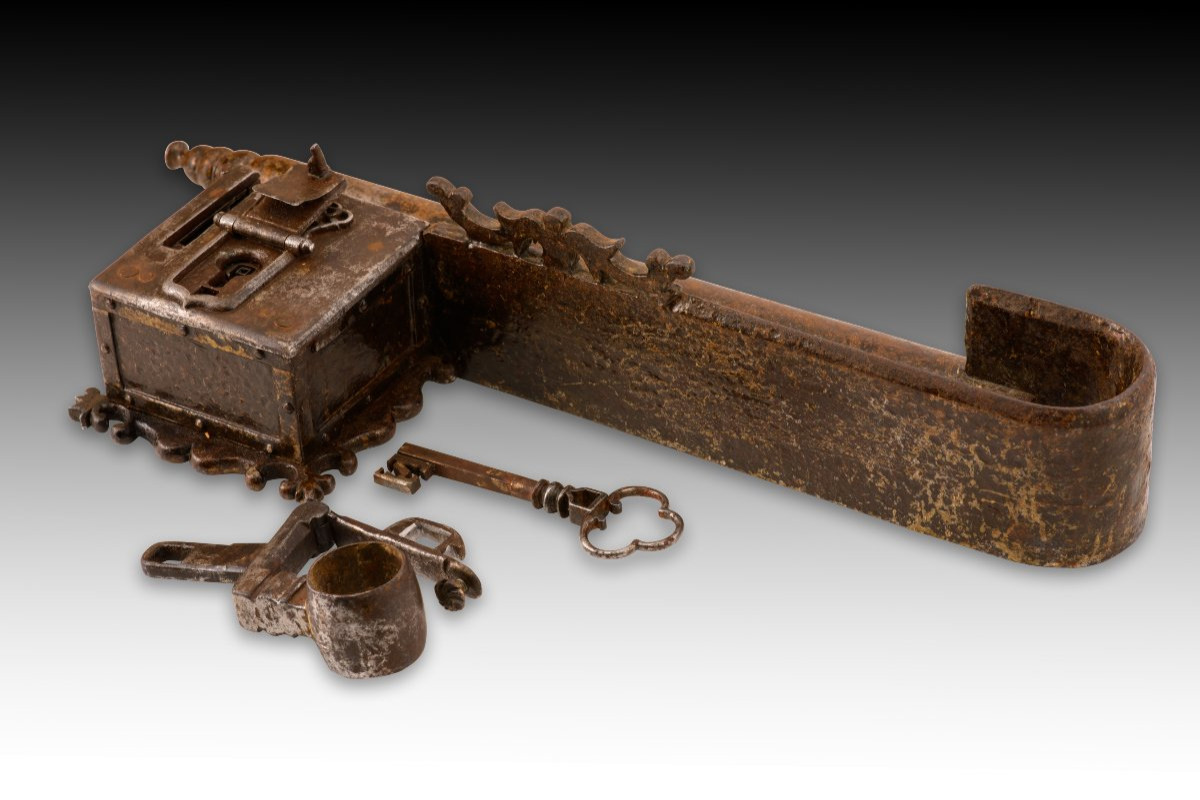











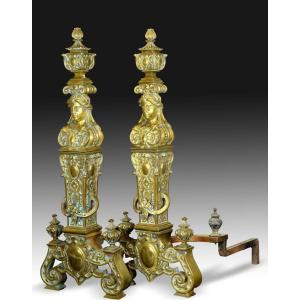
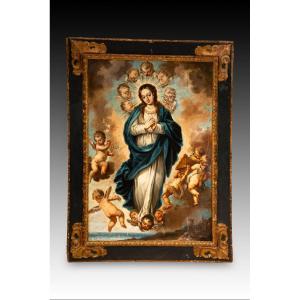














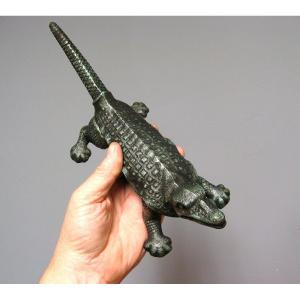






 Le Magazine de PROANTIC
Le Magazine de PROANTIC TRÉSORS Magazine
TRÉSORS Magazine Rivista Artiquariato
Rivista Artiquariato